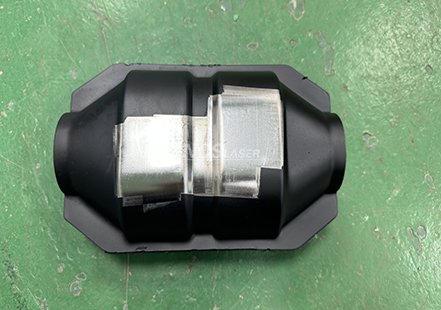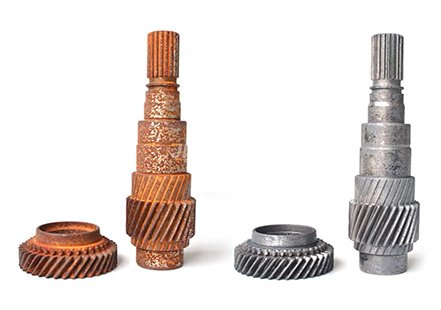What industries use laser cleaning
Laser cleaning and chemical cleaning
Chemical cleaning uses solvents to break down coatings and residues without damaging the underlying material. This method is usually slow and requires the material to be immersed in a chemical tank for a long time and dried after the cleaning is completed. The problem of long immersion can be partially overcome by putting more parts into larger tanks, but this method requires a lot of ground space.
Essential hazardous chemicals also require important safety precautions such as personal protective equipment and strict disposal procedures. The treatment, recovery and disposal of the necessary chemical solvents has become an increasingly costly challenge due to regulatory controls.
Although laser cleaning has many disadvantages, it cannot completely replace chemical cleaning. Although chemical cleaning is not easily applied to selective areas, it is often a unique solution for cleaning unseen items such as pipes and complex components.
Laser cleaning and thermal cleaning
Hot cleaning uses higher temperatures to burn off surface material. This approach has a high energy cost and can cause damage to the underlying material, depending on the surface material and the heat resistance of the substrate. Thermal cleaning itself is also unable to perform selective clearance, even when masks are used.
How to use laser cleaning?
Laser cleaning is an ideal method for cleaning a variety of materials and part types. Laser cleaning has a wide range of applications and can be used at all stages of production, including as a step before or after another process on the production line, or for the repair of existing components.
Common laser cleaning applications include
- Remove contaminants such as rust, oil, and burning sediments
- Peel off coatings such as paints, electronic coatings, ceramics and oxides
- Remove release agent and residue to simplify mold maintenance
Improve adhesion by preparing surfaces for welding, bonding, painting, and coating - Improve bond strength by cleaning before bonding or surface texture treatment
- Extend the life of the coating by pre-cleaning the parts before applying the coating
- Disinfection of critical equipment in medical and food applications
What industries use laser cleaning?
Any industry that must provide or treat clean surfaces can benefit from the numerous advantages of laser cleaning. As a process, laser cleaning is easy to automate and integrate into the production shop floor. For smaller scale use, some handheld laser devices provide cleaning capabilities in addition to welding or cutting capabilities. Laser cleaning is commonly used in the following industries
- General manufacturing industry
- Aerospace manufacturing
- Dealing with nuclear pollution
- Disinfection of medical instruments
- Catering
Introduction to Laser Cleaning
Many applications and manufacturers can benefit from laser cleaning solutions. From fiber laser sources for cleaning to dedicated laser cleaning systems,laser cleaning experts are ready to help. Getting started is very easy – send us samples, visit our global application LABS, or just tell us about your application.
200w pulsed fiber laser cleaning machine working video:
Por favor, póngase en contacto con nosotros para más detalles:
Los derechos de autor pertenecen a JNCSLASER
Correo electrónico: info@jncslaser.com
Whatsapp/Wechat: 0086 18254116182

 CN
CN Arkansas
Arkansas ES
ES RU
RU









